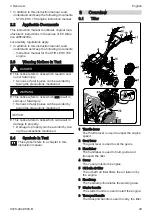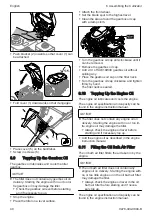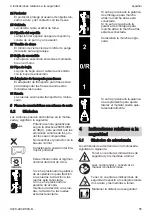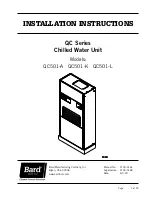
► Adjust the engine speed using throttle
lever (1).
9.4
Engaging and Disengaging
Self-propulsion
9.4.1
Engaging Self-propulsion
The clutch lever for self-propulsion is used to
engage or disengage the drive shaft when the
engine is running.
Self-propulsion forwards
With the hoes or running wheels attached and
gears 1 or 2 engaged, the tiller moves forwards
when the clutch lever for self-propulsion is actu‐
ated.
► Start the engine.
► Press lock (1) downwards to the stop and
hold.
► Press clutch lever for self-propulsion (2)
upwards to the stop and hold.
► Release lock (1).
The drive is engaged and the drive shaft
rotates. The tiller moves forwards.
Self-propulsion rearwards
With the hoes or running wheels attached and
gear 0/R engaged, the tiller reverses when the
clutch lever for reverse gear is actuated followed
by the clutch lever for self-propulsion.
► Start the engine.
► Press lock (3) downwards to the stop and
hold.
► Press clutch lever for reverse gear (4)
upwards to the stop and hold.
► Release lock (3).
► Engage self-propulsion using clutch lever for
self-propulsion (2).
The drive is engaged and the drive shaft
rotates. The tiller reverses.
9.4.2
Disengaging Self-propulsion
► Release clutch lever for self-propulsion (1).
The drive is disengaged and the drive shaft
does not rotate.
10 Checking the Cultivator
10.1
Checking the Controls
Lock
► Stop the engine.
► Try to press the clutch lever without pressing
the lock.
► If the clutch lever can be pressed: do not use
the tiller and consult a STIHL specialist dealer.
The lock is defective.
► Press the lock and hold.
► Press the clutch lever.
► Release the clutch lever and lock.
► If the clutch lever or lock is stiff or does not
spring back into the initial position: do not use
the tiller and consult a STIHL specialist dealer.
The clutch lever or lock is defective.
► Check all clutch lever locks in the same way.
Clutch lever for self-propulsion
► Start the engine.
► Set gear 1 or 2.
10 Checking the Cultivator
English
0478-404-9804-B
43
















































